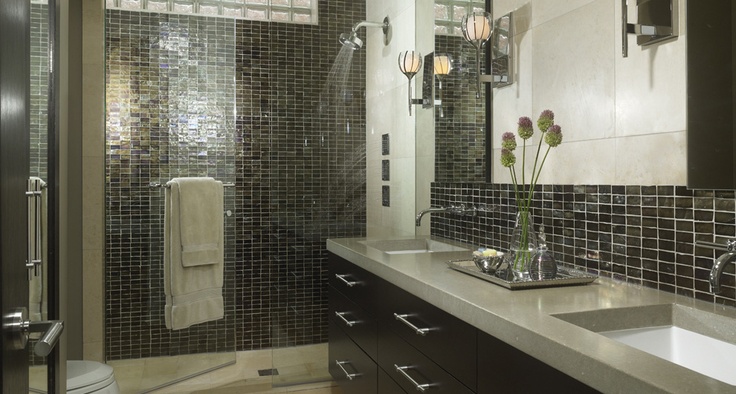Looking for ways to spruce up your bathroom? Need a new look or just need to brighten up your space? Try new bathroom lighting. Plus, the bathroom is a place that needs ample lighting considering that is the place where shaving, makeup application and showering takes place. Continue reading →
How to Install Tile to Bathroom Showers
There are ten(10) easy steps to installing Tile in Bathroom Showers. Please use this blog as a guideline for your project.
1. Demolition/Preparedness: Upon the completion of demolition of the old tile, install a cement backer board in the shower area. In most cases you would have a professional install the shower membrane and shower pan appropriate for the space. Continue reading →
How to: Replace Broken Tile
 Cracks in the tile are generally caused by the building settling, but can also be due to improper tile installation, the wrong kind of tile being used, or accidents. Whatever the reason, broken tiles are generally considered unsightly, and can even lead to more serious problems if moisture happens to get into and under the cracks.
Cracks in the tile are generally caused by the building settling, but can also be due to improper tile installation, the wrong kind of tile being used, or accidents. Whatever the reason, broken tiles are generally considered unsightly, and can even lead to more serious problems if moisture happens to get into and under the cracks.
Obviously, in most cases, you won’t want to replace the entire floor due to one or two broken tiles. Here is how to remove and replace the broken tiles easily.
Materials:
• Replacement tile
• Tile adhesive
• Grout
• Water
Tools:
• Grout Scraper
• Hammer
• Pry bar
• Safety glasses
• Trowel
• Grout float
• Sponge
• Small bucket
• Filling knife
- Scrape the Grout
 Working around the tile joints (seams), scratch out the grout using the grout scraper. You’ll be getting a pretty fine mess going, but you need to get as much of the grout out as possible. This will separate the broken tile(s) from the ones that are not broken and will make it easier to get a pry bar under the edges if necessary later on.
Working around the tile joints (seams), scratch out the grout using the grout scraper. You’ll be getting a pretty fine mess going, but you need to get as much of the grout out as possible. This will separate the broken tile(s) from the ones that are not broken and will make it easier to get a pry bar under the edges if necessary later on. - Break/Loosen the Tile
With the hammer, hit the tile a couple of times to loosen it from the surface it is adhered to. Depending on the size of the tile, you will probably have to remove it in chunks. Once you’ve broken it up, use the other side of the hammer or the pry bar to lift up the tile pieces. - Scrape Adhesive
Once you’ve gotten as much of the tile as possible removed, you need to get rid of the old adhesive. Use a scraper, filling knife or even putty knife to scrape it all off. - Clean the surface
To be sure your new tile properly adheres; you will need to at least dust off the surface. At best, try to clean the surface with a damp cloth and some mild soap. Wait until it is completely dry before moving to the next step. Do not use a wet cloth! Damp will pick up the dust; wet will get water under the adjacent tiles and cause a lot of issues later on. - Add New Adhesive
Use the trowel to apply the adhesive back onto the surface (just as the old stuff was.) The layer should be only about ¼ inch. - Set the Tile
Now place the new tile on top of the adhesive and press firmly in the middle, corners, and along the sides. Press many times and even wiggle the tile a little bit to be sure it is set firmly. - Re-grout
Now you can mix up your grout into the same paste consistency as the adhesive and use your grout float to smear it along the sides of the tile. Be sure the grout is getting into all of the seams around the tile – don’t leave gaps; fill up each seam completely! - Clean up
 Finally, you can use your sponge and bucket of water to clean all of the excess grout off the surface of the tiles. The sponge should be damp enough to pick up excess grout, but NOT soaking wet enough to alter the consistency of the grout in the joint.
Finally, you can use your sponge and bucket of water to clean all of the excess grout off the surface of the tiles. The sponge should be damp enough to pick up excess grout, but NOT soaking wet enough to alter the consistency of the grout in the joint.


